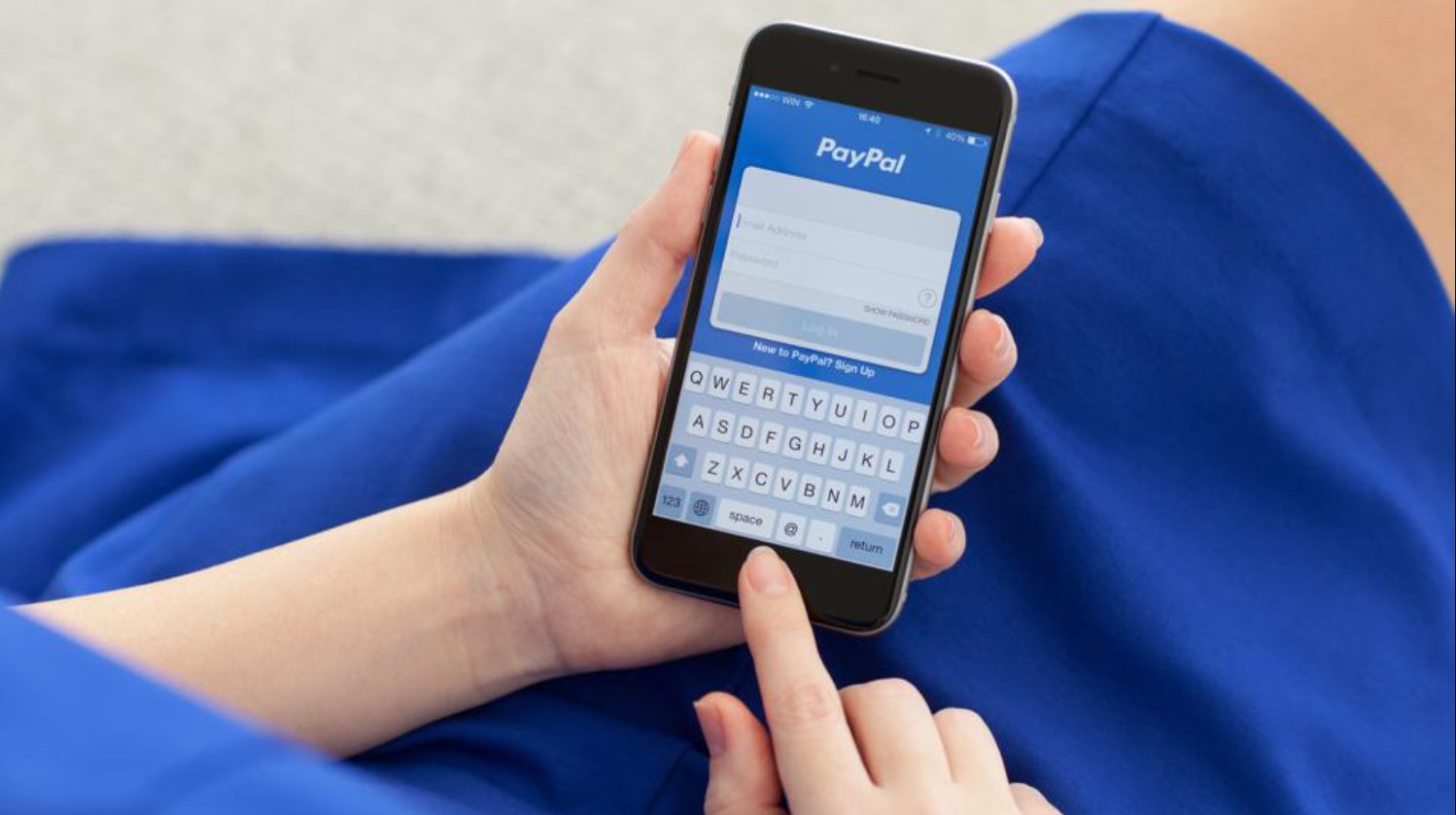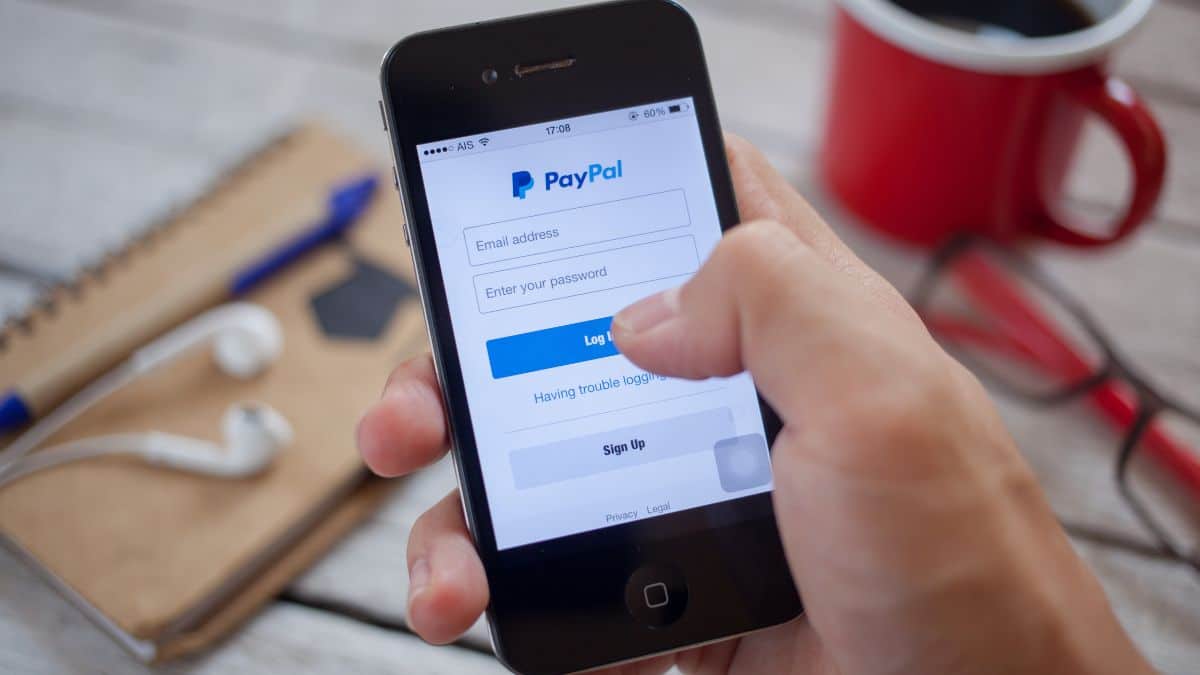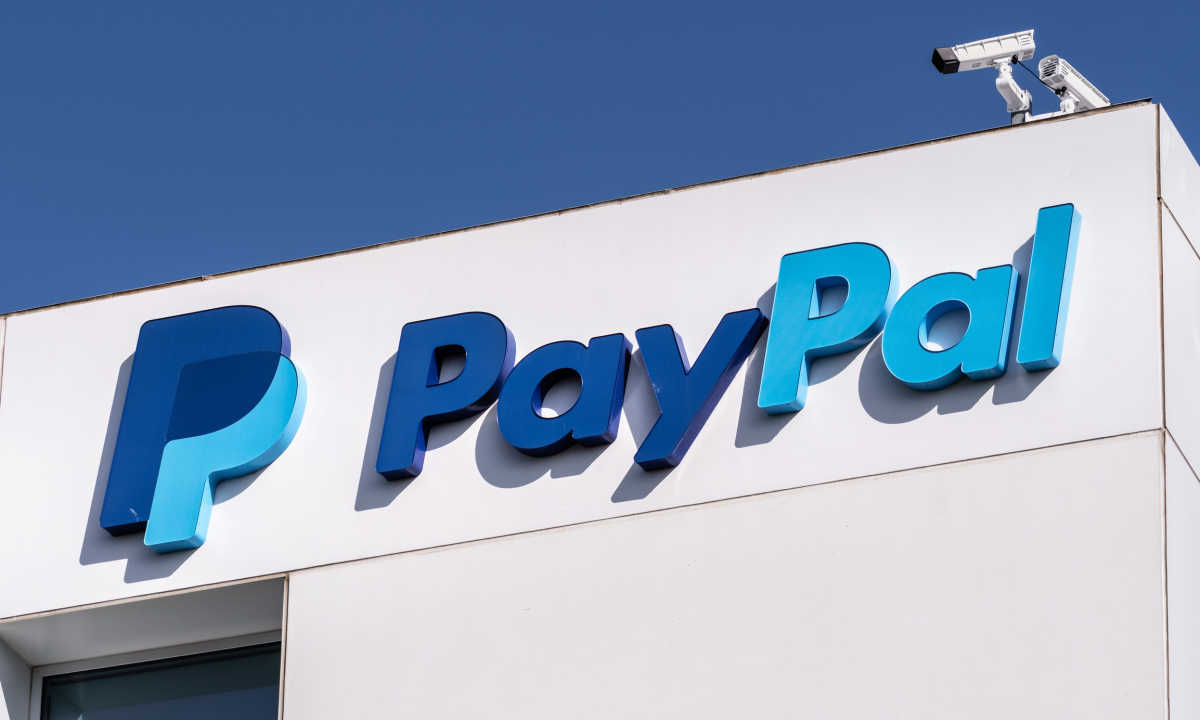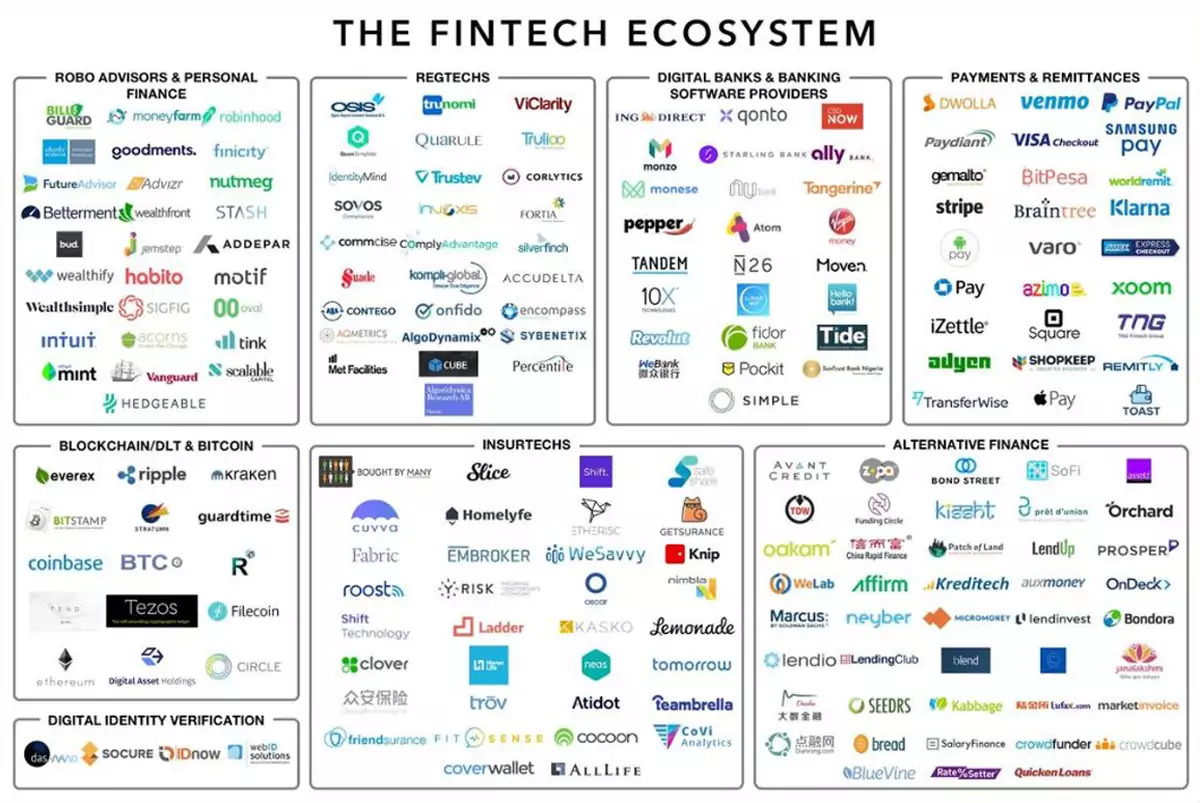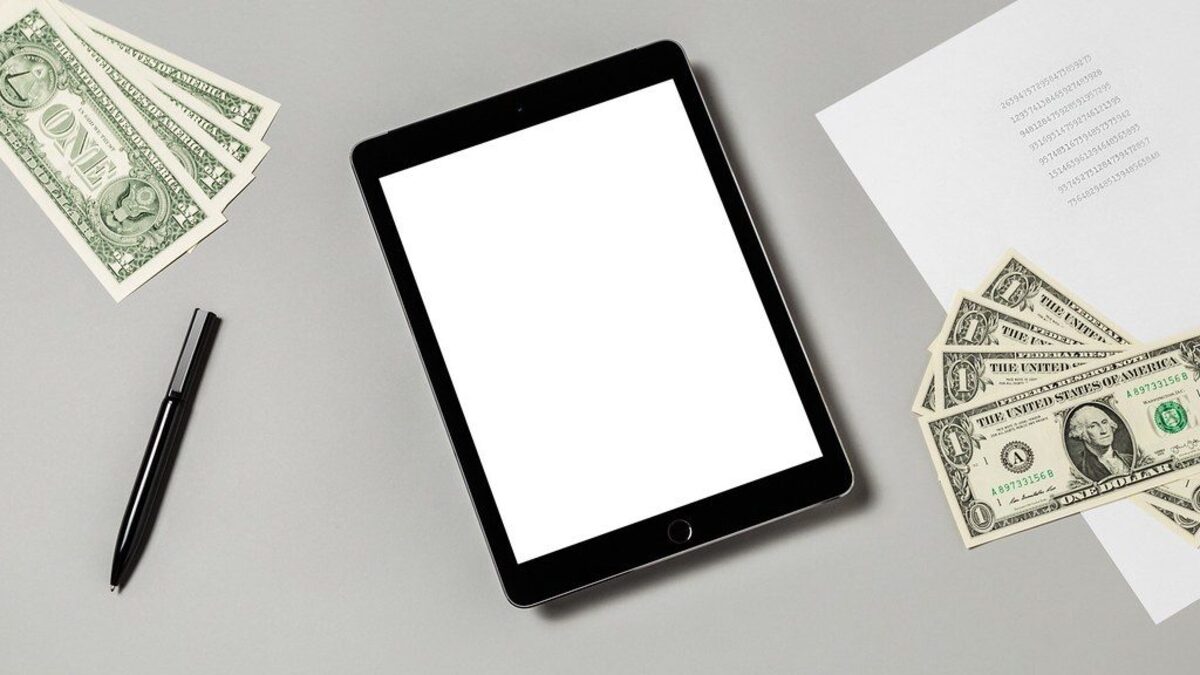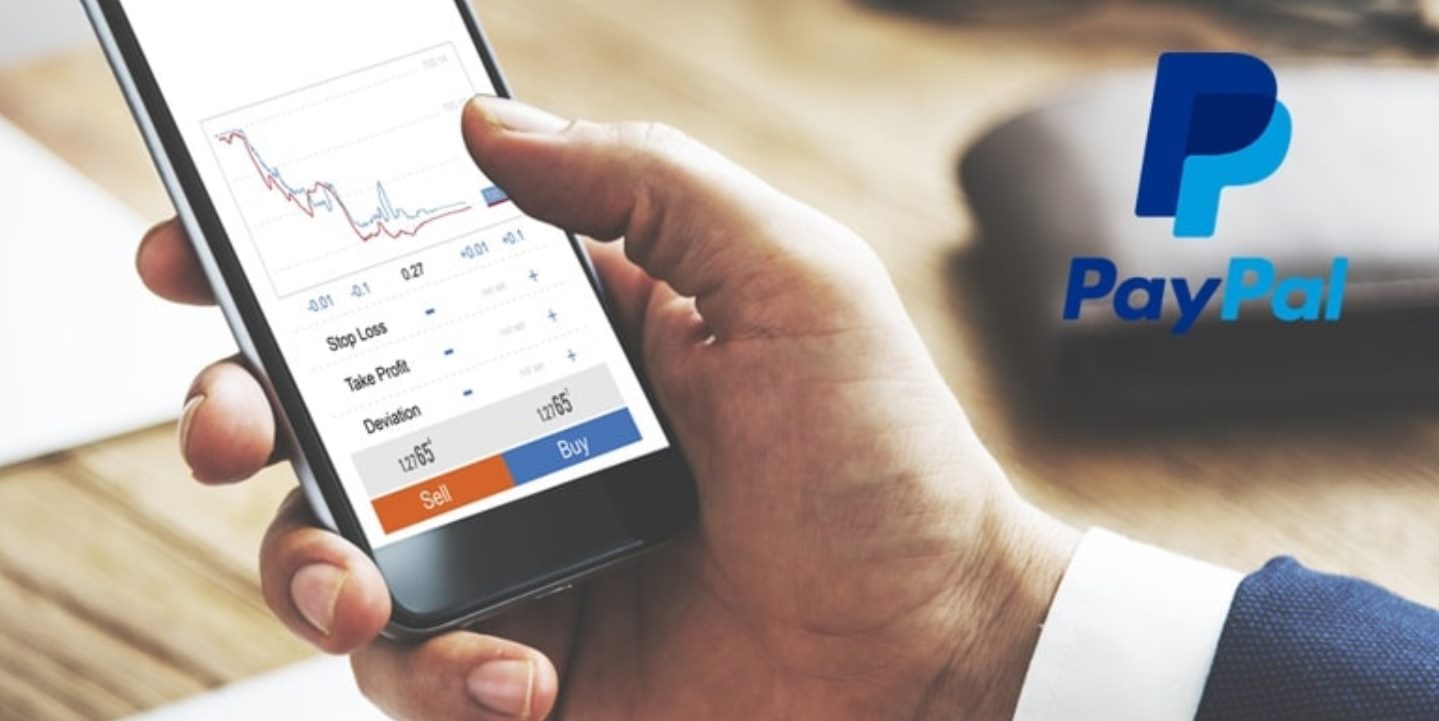Introduction
Welcome to the world of freelance commissions on Tumblr! If you’re an artist or content creator looking to monetize your talents, PayPal is a convenient and reliable method for accepting payments. With millions of users worldwide, PayPal offers a secure platform to receive and send money online. In this article, we’ll guide you through the process of using PayPal for commissions on Tumblr, from setting up your account to communicating with clients and delivering your work.
Setting up your PayPal account is the first step on your journey to earning money through commissions. By creating a PayPal account, you’ll have access to a wide range of features and tools that make financial transactions a breeze. We’ll show you how to navigate the setup process and ensure that your account is fully functional and ready to receive payments.
Once your PayPal account is up and running, it’s time to start creating posts for your commissions on Tumblr. We’ll walk you through the process of creating compelling and visually appealing commission posts that attract potential clients. You’ll learn how to showcase your portfolio, set clear commission guidelines, and establish pricing structures.
Providing comprehensive details about your commissions is crucial in attracting the right clients. We’ll guide you on how to effectively communicate what you offer, including the types of commissions available, any limitations or restrictions, and the estimated delivery timeframes. By providing clear and concise information, you’ll make it easier for clients to understand and decide on commissioning your services.
Accepting payments through PayPal is a secure and hassle-free process. We’ll show you how to send invoices, request payments, and set up custom buttons for different commission types. You’ll also learn how to navigate PayPal’s fees and transactions to ensure that you receive the appropriate amount for your services.
Communication is key when it comes to successful commission transactions. We’ll provide you with tips on how to effectively communicate with your clients, including responding to inquiries, setting expectations, and providing progress updates. By maintaining clear and open lines of communication, you’ll foster trust and build strong relationships with your clients.
Once you’ve completed a commission, it’s time to deliver your work to your clients. We’ll guide you through the process of securely sharing your content, whether it’s through email, file sharing platforms, or uploading directly to Tumblr. You’ll learn how to protect your work and provide clients with a professional and satisfying experience.
While using PayPal for commissions on Tumblr is generally straightforward, there can be occasional troubleshooting issues. We’ll provide you with some common issues you may encounter and offer troubleshooting tips to help you resolve them quickly and efficiently.
Congratulations! By following the steps outlined in this article, you’re now equipped to use PayPal for commissions on Tumblr. Embrace the world of freelance commissions, monetize your talents, and enjoy a rewarding journey on your path to success. So why wait? Let’s get started!
Setting Up Your PayPal Account
Before you can start accepting payments for your commissions on Tumblr, you’ll need to set up a PayPal account. Follow these steps to ensure a smooth account setup:
- Go to the PayPal website and click on the “Sign Up” button.
- Select the type of account you need – Personal or Business. Most artists and creators opt for a Personal account due to its simplicity and convenience.
- Fill in the required information, including your name, email address, and password. Make sure to use a secure password containing a combination of letters, numbers, and symbols.
- Next, you’ll be asked to link a bank account or credit card to your PayPal account. This will allow you to send and receive funds.
- Follow the prompts to complete the process, including verifying your email address.
- Once your account is set up, it’s essential to confirm your identity to unlock additional features and increase your transaction limits. This involves providing PayPal with some personal information and, in some cases, linking and confirming your bank account.
- After your account is fully set up and verified, it’s a good idea to customize your PayPal profile. Add your artist name or business name, a professional profile picture, and a brief description of the services you offer. This helps to establish trust with potential clients.
As you set up your PayPal account, ensure that you enable notifications and alerts. This way, you’ll receive timely updates on any transactions, account activity, or notifications related to your commissions. You can choose to receive these notifications via email or directly to your mobile device through the PayPal mobile app.
Remember, maintaining the security of your PayPal account is crucial. Be cautious of any suspicious emails or messages requesting personal information. PayPal will never ask for your password or login information via email or an unsecured channel.
Once your PayPal account is fully set up and secured, you’re ready to start accepting payments for your commissions. The next step is creating compelling posts on Tumblr to showcase your work and attract clients. Let’s delve into that in the next section!
Creating a Post for Commissions
Now that your PayPal account is all set up and ready, it’s time to create captivating posts on Tumblr to advertise your commissions. A well-crafted commission post will not only attract potential clients but also showcase your artistic style and professionalism. Here are some tips to help you create an engaging commission post:
- Showcase your portfolio: Start by including a selection of your best works to give clients a glimpse of your artistic abilities and style. This helps build trust and confidence in your skills.
- Set clear guidelines: Clearly state the types of commissions you offer, such as digital art, illustrations, character designs, or custom artworks. Specify any limitations, such as not accepting NSFW (not safe for work) or explicit content commissions, if applicable.
- Establish pricing structures: Outline a pricing guide for your commissions. You can have different tiers based on complexity, size, or time commitment. Make sure to include any additional fees for rush orders or revisions.
- Provide examples and details: Include examples and descriptions of each commission type to give clients a clear idea of what they can expect. This can include the dimensions, medium, and any other relevant information.
- Highlight your process: Explain how you work with clients throughout the commission process. This can include initial consultation, rough sketches for approval, progress updates, and final delivery.
- Specify delivery timeframes: Provide an estimated timeframe for completing commissions. Avoid setting unrealistic expectations and be transparent about potential delays due to workload or unforeseen circumstances.
When creating your commission post, remember to use appealing visuals and formatting to catch the attention of your audience. Utilize high-quality images of your artwork and break the text into easy-to-read paragraphs. Consider using bullet points or numbered lists to present information clearly and concisely.
Additionally, make it easy for potential clients to contact you by including your preferred method of communication, such as an email address or Tumblr messaging. Respond promptly to inquiries and be professional in your interactions to build a positive reputation.
Once your commission post is live on Tumblr, promote it across your social media platforms, share it with your followers, and engage with the Tumblr art community. The more exposure your post receives, the higher your chances of attracting clients.
Now that you’ve mastered the art of creating commission posts, it’s time to dive into the next step: providing detailed commission information. Let’s explore that in the following section!
Providing Commission Details
When offering commissions on Tumblr, it’s essential to provide potential clients with detailed information about what you offer. By clearly communicating the specifics of your commissions, you can manage expectations and ensure a smooth and satisfying experience for both you and your clients. Here are some key details to include:
- Commission types: Clearly define the different types of commissions you offer, such as digital illustrations, character designs, or custom artworks. Specify the style, medium, and any unique features you provide.
- Size and dimensions: State the size and dimensions of the artworks clients can expect. If applicable, include the resolution for digital artworks and the physical dimensions for traditional pieces.
- Mediums and materials: Specify the mediums and materials you utilize for your commissions. This can include digital software, traditional art supplies, or a combination of both. If there are any limitations or preferences, such as the use of specific colors or techniques, be sure to mention them.
- Reference requirements: Inform clients about the reference materials you require to accurately depict their desired subject. This can include reference images, descriptions, or any specific details you need to create the commission.
- Deadline and delivery: Clearly state the estimated timeframe for completing the commission. Discuss how the final artwork will be delivered, whether it’s through email, a file-sharing service, or directly uploaded on Tumblr.
- Pricing and payment: Reiterate your pricing structure and payment methods accepted. Specify if a deposit is required upfront or if full payment is due upon completion. Outline your refund and cancellation policy, if applicable.
- Revisions and modifications: Clarify the number of included revisions or modifications you offer. State any additional fees that may apply if the client requests significant changes beyond the initially agreed-upon concept.
- Terms of use: Discuss the rights and permissions associated with the commissioned artwork. Specify whether the client will have exclusive or non-exclusive rights, if you retain the right to display the artwork in your portfolio, and any other relevant terms related to the usage and distribution of the commission.
By providing comprehensive commission details, you set clear expectations for your clients and minimize any misunderstandings during the process. It’s crucial to be transparent about your workflow and ensure that clients understand what they can expect when commissioning your services.
Remember to be courteous and professional when discussing commission details with potential clients. Promptly address any inquiries or concerns, and be open to communication throughout the commission process. Clear and open lines of communication help build trust and foster positive relationships with your clients.
Now that you’ve provided detailed commission information, it’s time to move on to accepting payments through PayPal. Keep reading to learn more about this crucial step.
Accepting Payments through PayPal
Now that you’ve established the details of your commissions, it’s time to dive into the process of accepting payments through PayPal. PayPal provides a secure and convenient platform for both you and your clients to transact. Here’s how you can effectively accept payments:
- Sending invoices: PayPal allows you to generate and send professional invoices directly to your clients. You can customize the invoice with your branding, itemize the services provided, and include your payment terms.
- Requesting payments: If you prefer a more informal approach, you can request payments from your clients without issuing an invoice. Simply provide your PayPal email address or username to the client, and they can send payment directly to you.
- Setting up custom buttons: PayPal offers an option to create custom payment buttons that can be embedded directly on your Tumblr posts or website. This makes it easy for clients to select the desired commission type and make payment seamlessly.
- Managing fees: PayPal charges a small fee for each transaction. Be sure to familiarize yourself with the fee structure, including any percentages or additional charges for international transactions or currency conversions. Ensure that you factor these fees into your pricing to avoid any profit loss.
- Securing your transactions: PayPal places great importance on the security of transactions. To enhance the security of your PayPal account, enable features like two-factor authentication and regularly update your account password.
- Confirming payment receipt: Once you receive a payment, PayPal will notify you via email or through the PayPal app. Confirm the receipt of payment and mark the corresponding commission as “paid” in your records.
It’s important to maintain clear and open communication with your clients throughout the payment process. Ensure that they receive payment confirmations, and promptly address any concerns or discrepancies that may arise.
Remember, PayPal provides a dispute resolution system that protects both buyers and sellers. In the rare event of a dispute, work with your client to find a mutually agreeable solution. Open communication and a professional approach can help resolve issues amicably.
Now that you have a solid understanding of accepting payments through PayPal, let’s move on to the next important aspect: communicating effectively with your clients.
Communicating with Clients
Effective communication is essential when it comes to providing excellent customer service and ensuring a smooth commission process. Here are some tips for effectively communicating with your clients:
- Respond promptly: Aim to respond to client inquiries and messages in a timely manner. Prompt communication shows professionalism and builds trust with your clients.
- Be clear and concise: When providing updates or answering questions, be clear and concise in your responses. Use language that is easy to understand and avoid jargon that may confuse your clients.
- Set expectations: Clearly outline the timeline and process for your commissions. Let clients know when they can expect progress updates, as well as the estimated completion date for their commission. If any delays occur, communicate openly and provide revised timeframes.
- Offer progress updates: Keep your clients engaged and informed about the status of their commission. Share work-in-progress images or sketches to involve them in the creative process and make any necessary adjustments along the way.
- Ask for feedback/input: Encourage your clients to provide feedback or input during the commission process. Their involvement and satisfaction are important, so make them feel valued and consider their suggestions or preferences.
- Be professional: Maintain a professional and courteous tone in all your communications. Treat your clients with respect, even if faced with challenging situations or difficult requests.
- Manage expectations: Be upfront about what you can and cannot do within the scope of the commission. If a client requests additional work beyond the agreed-upon concept, discuss any potential additional charges or modifications to the timeline.
- Resolve conflicts tactfully: In the event of any conflicts or misunderstandings, approach the situation calmly and tactfully. Listen to your client’s concerns, strive to find a fair solution, and maintain professionalism throughout the resolution process.
Remember, effective communication goes beyond just words. Pay attention to your tone, body language, and overall demeanor when interacting with clients. Strive to create a positive and enjoyable experience throughout the commission process.
By maintaining open lines of communication, you can build strong client relationships, foster trust, and ensure that your clients are satisfied with the final outcome. Now, let’s move on to the next section and discuss the completion and delivery of your commissions.
Completing and Delivering Commissions
Completing and delivering your commissions in a timely and professional manner is crucial for client satisfaction. Here are the steps to follow to ensure a smooth completion and delivery process:
- Review the commission: Before finalizing the artwork, carefully review it to ensure that it meets the client’s expectations and aligns with the agreed-upon concept. Make any necessary adjustments or final touches.
- Prepare the final files: Depending on the nature of the commission, prepare the final files or physical artwork for delivery. This could involve saving digital files in the appropriate format or preparing traditional artwork for shipping.
- Protect your work: If you’re delivering digital files, consider adding a discreet watermark or a signature to protect your work from unauthorized use. For physical artwork, package it securely to avoid any damage during transit.
- Communicate the delivery method: Notify your client about how you’ll be delivering their commission. This could be done through email, a file-sharing service, or direct upload on Tumblr. Provide any necessary instructions for accessing or downloading the files.
- Request final payment: If the client hasn’t already paid the full amount, send a final payment request along with the delivery notification. Make it clear that the work will be delivered upon receiving the final payment.
- Follow up and confirm delivery: Once the client has received the commission, follow up with them to ensure that everything is as expected. Request feedback to gauge their satisfaction with the artwork and the overall commission process.
- Show appreciation: Express gratitude to your client for their support and for choosing your services. A simple thank you message goes a long way in building lasting relationships and earning repeat business.
Remember, communication doesn’t end after delivering the commission. Stay in touch with your clients, even after the transaction is complete. Engage with them on social media and keep them updated on your future work or any new commission opportunities that may arise.
By efficiently completing and delivering your commissions, you not only provide a valuable service to your clients but also establish a reputation for professionalism and reliability. Now, let’s explore the next section and address any potential troubleshooting and common issues that may arise during the commission process.
Troubleshooting and Common Issues
While using PayPal for commissions on Tumblr is generally straightforward, there may be occasional troubleshooting issues that arise. Here are some common issues you may encounter and tips on how to resolve them:
- Payment delays: Occasionally, payments may be delayed due to various reasons, such as processing issues or verification requirements. Stay in touch with your clients and encourage them to reach out to PayPal’s customer support for assistance in resolving payment delays.
- Disputed transactions: In rare cases, a client may dispute a transaction, claiming that they did not receive the commission or are unsatisfied with the work. It’s important to provide PayPal with any evidence or documentation of the completed commission to support your case and resolve the dispute. Maintain open and transparent communication with the client throughout the resolution process.
- Technical difficulties: Issues with PayPal’s website or app functionality can occur. If you encounter any technical difficulties, try clearing your cache and cookies or accessing PayPal using a different browser. If the problem persists, reach out to PayPal’s customer support for assistance.
- Communication challenges: Misunderstandings or miscommunications can happen during the commission process. If a client is unclear about the details or has different expectations, take the time to communicate clearly and address any concerns. Clarify any points of confusion and work together towards a resolution that satisfies both parties.
- Refund requests: Sometimes, a client may request a refund due to unforeseen circumstances or dissatisfaction with the commission. It’s important to have a clear refund policy in place and communicate it upfront to avoid confusion. Assess each refund request on a case-by-case basis and find a fair solution that balances the client’s needs with your time and effort invested.
In addition to these troubleshooting tips, it’s important to maintain a professional and calm demeanor when faced with challenges. Being responsive, empathetic, and willing to find a resolution demonstrates your commitment to providing excellent service and maintaining a positive reputation.
Remember, every challenge or issue can become an opportunity for growth. Take the time to reflect on any problems that arise and learn from them to improve your processes and avoid similar issues in the future.
With these troubleshooting tips in mind, you’re well-equipped to overcome any common issues that may arise during the commission process. Now, let’s move on to the final section of this guide and wrap up our journey through using PayPal for commissions on Tumblr.
Conclusion
Congratulations! You’ve reached the end of our guide on using PayPal for commissions on Tumblr. By following the steps outlined in this article, you are now equipped with the knowledge and tools to effectively monetize your talents and provide commission services to clients around the world.
We started by setting up your PayPal account and ensuring that it’s fully functional and verified. Then, we delved into creating compelling commission posts on Tumblr, showcasing your portfolio, and establishing clear guidelines for potential clients. We also discussed the importance of providing detailed commission information, managing payments, and communicating effectively with your clients throughout the process.
In addition, we explored the crucial steps of completing and delivering your commissions, ensuring client satisfaction, and troubleshooting common issues that may arise. By maintaining professionalism, open communication, and a customer-centric approach, you’re well on your way to building strong and lasting relationships with your clients.
Remember, the journey of offering commissions requires continuous learning and adaptation. Stay connected with the Tumblr art community, engage with your followers, and seek feedback to improve your skills and services. Embrace challenges as opportunities for growth, and always strive to deliver your best work with each commission you undertake.
Using PayPal for commissions not only provides you with a secure and seamless payment system but also opens doors to a wider audience and potential clients worldwide. Take advantage of this powerful tool and enjoy the rewarding experience of sharing your artistic talent while earning a living doing what you love.
So go ahead, set up your PayPal account, create captivating commission posts, and embark on your journey as a professional commission artist on Tumblr. Best of luck, and may your artistic endeavors flourish!









